G program Japanese Masterpiece Selection 4: Space Mission!
In order to see worlds invisible to our eyes, telescopes gradually became larger and larger, while rockets were sent farther and farther away from the Earth. Four works that trace seventy years along the path down which science and films ventured.
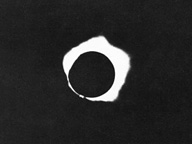 The Black Sun
The Black Sun
(“Kuroi taiyo”)- JAPAN / 1936 / Japanese / B&W / 35mm / 19 min
Director: Miki Shigeru
Photography: Miki Shigeru, Hayashida Shigeo
Optical Devices: Goto Inc.
Sound: Kondo Takeo
Models: Maeda Hajime
Production Company: The Asahi Shinbun Company
Source: TV Asahi Productions, National Film Center
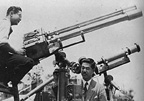 Using a long telephoto lens and a unique optical setup to capture the total solar eclipse witnessed in Hokkaido in June 1936, for the first time anywhere in the world a simultaneous sound and visual recording of the corona spectrum was successful. A film prized not only as a scholarly record, but also for attracting the talk of ordinary moviegoers when it was given a theatrical release.
Using a long telephoto lens and a unique optical setup to capture the total solar eclipse witnessed in Hokkaido in June 1936, for the first time anywhere in the world a simultaneous sound and visual recording of the corona spectrum was successful. A film prized not only as a scholarly record, but also for attracting the talk of ordinary moviegoers when it was given a theatrical release.
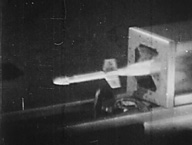 Pencil Rockets and Baby Rockets
Pencil Rockets and Baby Rockets
(“Penshiru roketto to bebi roketto”)- JAPAN / 1955 / Japanese / B&W / Video (Original: 16mm) / 22 min
Photography, Editing: Central Film Developing/Uemura Laboratory, Institute of Industrial Science, the University of Tokyo
With the assistance of Shunju Eigasha
Production: Institute of Industrial Science, the University of Tokyo
Source: JAXA, Institute of Space and Astronautical Science
A valuable record of the first year in the now-fifty-year history of the development of Japanese rockets. The extraordinary journey toward contemporary space exploration started on April 12, 1955, when Itokawa Hideo (1912–1999) and other professors launched a 23-centimeter-long “pencil rocket” along the ground.
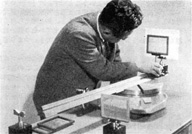 The Road to X-Ray Astronomy
The Road to X-Ray Astronomy
(“X-sen tenmongaku e no michi”)- JAPAN / 1968 / Japanese / Color / 16mm / 21 min
Director: Yabe Masao
Script: Yoshihara Junpei
Photography: Nakayama Masaaki
Music: Kikuchi Masaharu
Producers: Tanaka Kiyohiro, Shimomura Masahiko
Planning: Ministry of Education (now the Ministry of Education, Culture, Sports, Science, and Technology)
Production Company: Iwanami Productions
Source: National Film Center
This film is a superb achievement in which the then-new field of X-ray astronomy, the observation of celestial bodies that give off strong X-rays, is explained in an easily understandable way. It takes as a basis the results found by the Tokyo Astronomical Observatory in 1966, where they succeeded in optical identification of the Scorpius X-ray source using a modulation collimator, which measures the angle of incidence of light.
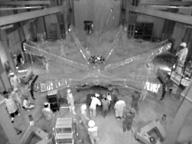 A Radio Telescope Bigger than the Earth
A Radio Telescope Bigger than the Earth
(“30,000 km no hitomi: Uchu denpa boenkyo de ginga burakku horu ni semaru”)- JAPAN / 2005 / Japanese / Color / Video / 30 min
Director, Script: Makiguchi Mitsuro
Photography: Sakata Yuji
Research: Hirabayashi Hisashi (JAXA)
Production Company: Image Science, Inc.
Planning, Source: JAXA, Institute of Space and Astronautical Science
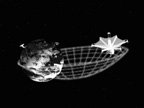 In response to the wishes of radio astronomers who want to push telescope magnification to the ultimate level, a space radio telescope with a larger-than-the-earth diameter of 30,000 km is born! This new scientific film shows on the largest scale known to humanity how we have become “eyewitnesses” to astonishing phenomena beyond our galaxy.
In response to the wishes of radio astronomers who want to push telescope magnification to the ultimate level, a space radio telescope with a larger-than-the-earth diameter of 30,000 km is born! This new scientific film shows on the largest scale known to humanity how we have become “eyewitnesses” to astonishing phenomena beyond our galaxy.
